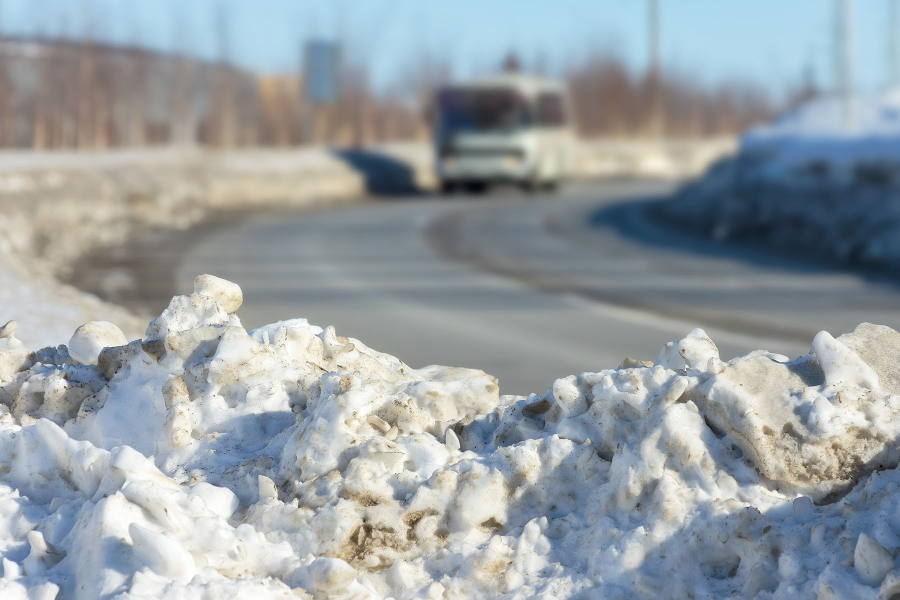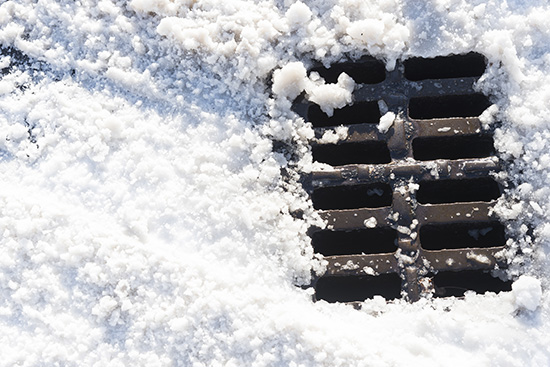By the Numbers: 2.5 million
The amount of road salt, in tons, applied across the Chesapeake Bay watershed each year

Each winter, the mid-Atlantic receives an average of 23 inches of snow. To combat the flakes that freeze on roads and slow drivers down, states spread road salt on highly traveled highways. While removing ice and increasing tire traction is critical to keeping drivers safe during snowstorms, the most commonly used road salt can have adverse effects on the surrounding environment.
According to the Chesapeake Stormwater Network, between 10 and 20 million tons of road salt—the most common form of which is sodium chloride—are applied to the nation’s highways each year. About a third of this is applied to states in the mid-Atlantic, and stormwater professionals estimate that 2.5 million tons of road salt are applied annually across the Chesapeake Bay watershed. While a Chesapeake Bay Commission review of regional road salt policies found that the indiscriminate application of road salt does not typically occur in Maryland, Virginia or Pennsylvania, evidence shows that chloride concentrations in Maryland’s freshwater streams have increased over the last 40 years because of salt accumulation.
Because sodium chloride dissolves in water, it enters streams easily when surrounding snow melts. Small streams located close to treated roads are disproportionately affected by road salt and suffer notable chloride spikes each winter. While streams that are considered freshwater typically contain less than 300 mg of chloride per liter—and the U.S. Environmental Protection Agency has recommended long-term chloride exposure fall under 230 mg per liter in freshwater streams—a paper published in the Proceedings of the National Academy of Sciences shows that urban streams in the mid-Atlantic can contain five to ten times that amount.
What does this mean for streams and the critters that call them home? A literature review from the Maryland Department of the Environment notes that malformations among green frogs and mortality among spotted salamanders rise with exposure to road salt. High chloride levels can also lower the variety and abundance of fish in a waterway and cause those fish that are left to eat less and exhibit slower growth. And while some bottom-dwelling macroinvertebrates—whose presence is a key indicator of stream health—can withstand elevated chloride concentrations, long-term exposure is harmful. In Maryland, Index of Biotic Integrity scores—which rank stream health on a five-point scale—appear to decline as chloride concentrations increase, indicating road salt could be at least partially responsible for the “impaired” listings of certain streams in the state.

What can be done? Because road salt is a clear contributor to the long-term salinization of streams in the region, the Maryland Department of the Environment recommends aggressively managing and, in some cases, limiting road salt use. States can set chloride concentration standards, for instance, while highway agencies can work to improve the storage and application efficiency of deicers. Individual homeowners can make sure to apply deicers when they will be most effective or use chemical alternatives.
Learn how to deice the Bay-friendly way or track our progress toward improving stream health.

Comments
There are no comments.
Thank you!
Your comment has been received. Before it can be published, the comment will be reviewed by our team to ensure it adheres with our rules of engagement.
Back to recent stories